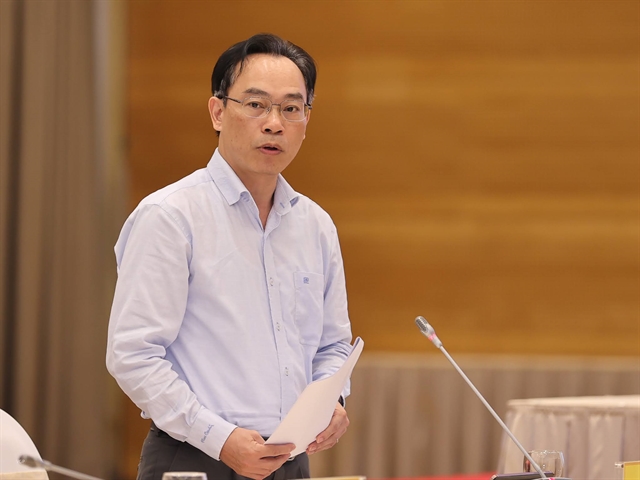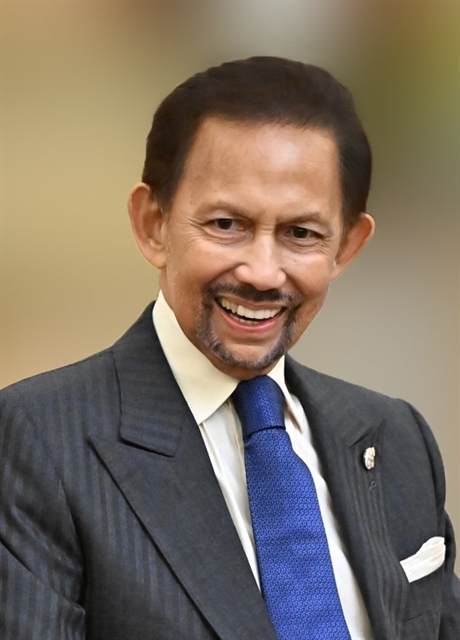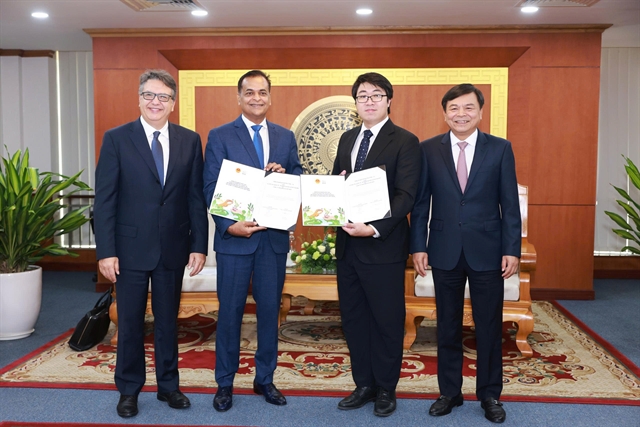 Society
Society

 |
| Deputy Minister of Education and Training Hoàng Minh Sơn. — VNA/VNS Photo |
The draft circular on standards for higher education, proposed by the Ministry of Education and Training in 2021, has gained significant attention from higher education institutions as it will set the requirements that universities must achieve.
Deputy Minister of Education and Training, Hoàng Minh Sơn, spoke with Vietnam News Agency on the establishment of higher education standards and how they should be based on practical surveys from universities and take into account international experiences.
Could you please tell us about the goals of the draft law. How will these standards differ from those that universities are currently using?
The standards outlined in the draft circular will be the minimum requirements for universities to maintain their operations. They will also serve as a basis to ensure the quality of institutions, reducing risks for all stakeholders, including the State, businesses, and especially the students who invest their money and time.
These standards will also help students evaluate institutions through specific and objective data instead of relying on subjective opinions.
By setting minimum requirements, the draft circular aims to gradually strengthen and enhance the quality of higher education. Along with the implementation of planning, localities and universities will have to invest in improving conditions to meet these standards.
Higher education standards differ from quality assurance standards in terms of purpose, nature, content, and implementation process.
In simple terms, higher education standards include specific operational parameters of a university. This is similar to receiving a medical check-up, blood pressure, or blood tests, which provide common indicators for easy comparison. Just as in health check-ups, these indicators show if there are any abnormal issues.
On the other hand, quality evaluation and assurance are much more complex tasks that require an assessment of the institution's activities over many years based on qualitative criteria, aligned with the mission and goals of each institution. This evaluation needs experts to analyse and make recommendations. This is similar to medical diagnoses and treatment prescriptions, which sometimes require consultations.
Higher education standards are minimum requirements that every institution must meet, while the evaluation and assurance depend on each institution's mission and goals. Institutions must comply with the minimum requirements specified in the higher education standards to meet the evaluation criteria, but even if they meet those standards, they may not meet the evaluation if they set very high missions and goals.
The indicators of higher education standards need to be monitored and published annually for students and society. Meanwhile, the evaluation and assurance process is conducted every five years to provide comprehensive reports, based on which higher education institutions develop strategies for improvement.
Việt Nam has 242 universities. Could you elaborate on the criteria set by the Ministry of Education and Training, and how they can be applicable to all universities?
This is the most challenging issue and one of the reasons why the draft circular has taken three years to complete. Establishing a set of six groups of standards is relatively straightforward, but within each group, determining the specific criteria, essential conditions, and the threshold for meeting the standards requires extensive discussion.
The ministry's perspective is that the criteria should be simple, easy to calculate, and quantifiable while also reflecting relatively comprehensive and essential requirements for a university to operate normally.
The drafting committee and the team of experts must refer to various sources. First, they draw from the practical management experience accumulated by the Ministry of Education and Training over the years.
They also consider experiences from other countries, international organisations, and foreign universities to see how they evaluate the importance of different criteria.
Some criteria are very common, like measuring quality through the employment rate of graduates, but there are also some that are relatively new to us. For instance, financial criteria, which we have paid less attention to in the past, are crucial for some countries in assessing the risks of a university concerning investors and students.
Regarding practical data, we have two sources: general data provided by the ministry, and the data filled out by the universities in the survey forms of the ministry. Based on this data, we compare international standards and determine the appropriate and feasible thresholds for each step.
We also engage in discussions and seek input from the universities. Of course, if all universities achieve high standards, then perhaps there is no need for standards. We must set higher thresholds to gradually improve the quality.
 |
| Students at HCM City Food Industry University working at the lab on an experimental instant rice product. — VNA/VNS Photo |
What sanctions will be imposed for universities that do not meet the standards?
There will be sanctions for universities that do not meet the standards, but the specific sanctions are not immediately determined in this circular. They may be included in other documents, such as Government decrees.
The higher education standards comprise six criteria with 24 specific indicators and 29 sub-indicators, so we need to consider which criteria and sub-indicators the university does not meet and the reasons for it.
For example, if a university admits too many students, they will have to reduce the intake for the following year to meet the criterion for the student-to-faculty ratio. If a public university operates inefficiently for several years, leading to high-risk levels in financial or enrollment indicators, and the cause is not a lack of investment from the governing body, then we will have to consider reorganisation and restructuring.
How does the ministry ensure that the data is reliable, especially when it comes to data provided by universities, such as student satisfaction or the employment rate of graduates?
The standards must be built on reliable data that can be monitored by the ministry, society, and the universities themselves.
Currently, the ministry has completed the Higher Education Management Information System (HEMIS), and universities have connected and updated data on new enrolments, students in attendance, and graduates annually, as well as faculty members, infrastructure, and facilities. These are the primary data used to calculate the indicators, with control mechanisms in place to ensure universities update them fully and accurately.
Other data, such as the employment rate of graduates and student satisfaction, will be reported by universities based on annual student surveys. However, the ministry will also have mechanisms to cross-check through sample surveys.
Currently, the ministry is collaborating with the Vietnam Social Security to link graduate data with workplace information. In the future, objective information about the employment status of graduates in each field and each training institution will be provided.
The current draft specifies that the indicators apply to both the entire university and that some indicators apply to each element. Some characteristics for different fields and majors such as land area requirements, building area, and faculty-to-student ratio are incorporated as adjustment factors in the formula for calculating the indicators.
Specific requirements and unique characteristics of each field or major such as practical facility requirements for health disciplines or teacher training programmes that are not covered by this standard will be defined in the standards for each field or group of training programmes.
In this way, the higher education standards, together with the programme-specific standards, will form a unified system that meets common requirements for each university while also addressing specific needs and characteristics of different fields and training programmes. – VNS




